- Overview
- Spotlight
- Photos
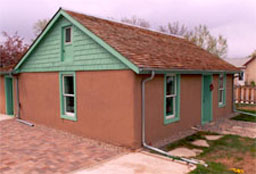
Visiting the Museo de las Tres Colonias you’ll see the adobe brick home built from mud and straw by John Romero in 1927. John and his wife, Inez Rivera Romero, worked at the Great Western Sugar Company (GWSC) beet factory and tried to make the best of the anti-Spanish prejudices of Fort Collins during those times. Having struggled for several years since making the journey from their home in New Mexico to Fort Collins, the Romeros wanted a better life for themselves and their growing family. They raised seven children and added more rooms to the house in the next 10 years, and their family lived out the rest of the century in this humble, but lovingly constructed home. Their home is now a cherished symbol, a place of learning, a place of community, a place that tells not only the Romero's story, but the story of many people with a shared experience.
Andersonville, Alta Vista, and Buckingham—the Tres Colonias—were the three Fort Collins neighborhoods built by the GWSC for their laborers. These neighborhoods were occupied by Germans from Russia for the first quarter of the 20th century, until they became tenant farmers, had saved enough money to purchase their own farms, or had moved to the more urban parts of Fort Collins.
As the Germans from Russia left the Colonias, the GWSC needed a new source of laborers. In the 1920s, Hispanic peoples, who traveled north from their homes in northern New Mexico, the San Luis Valley of Southern Colorado, and Texas, along with Mexican nationals, were recruited to work in the thriving beet industry. Wanting a more permanent experienced seasonal workforce that in turn would increase company profits and the workers’ standard of living, the GWSC encouraged the Spanish-speaking contract laborers to remain in nearby towns like Fort Collins during the off season. The GWSC worked with the laborers to construct new two-room adobe homes, with each family given five years to pay off the $125.00 cost.
John and Inez Romero’s home, built in the Andersonville community and typifying New Mexican folk architecture, is now the Museo de las Tres Colonias. The Museo is a place devoted to telling the story of Fort Collins’ early 20th century Hispanic pioneers, who carved out an abundant life working in the sugar beet industry, while celebrating an on-going rich cultural legacy.
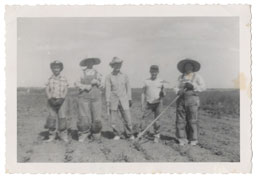
Imagine a day in the life of a German from Russia working in the beet fields around Fort Collins in the early 20th century. “Arbeit macht das Leben sues,” a favorite proverb—“work makes life sweet”—would ring true for you, if you considered that your hard work had allowed your family to buy their own farm, lessening your dependency on the Great Western Sugar Company (GWSC). Not that your workload was less—in fact, it was probably much harder on you, your spouse, and your children, especially if your older children were still working at the GWSC as well as helping out on the farm.
But when the Germans from Russia who had settled in Fort Collins were finally able to buy their own farms, life was better. They could move away from Andersonville, away from the river that had flooded disastrously in 1904, and into sturdier homes with indoor plumbing. They kept alive their traditions from the Volga River region in Russia, including the wedding celebration or “Hochzeit.” Three days of eating good German food like the “dinna kucha” coffee cake, dancing the “Dutch Hop,” and talking with friends, this was an event that gave everyone in the community an opportunity to remember where they came from—Germans who had once moved to Russia to better their lives, and now found themselves in yet another country; changing, but also staying true to their heritage.
In the early 1900s, the GWSC began recruiting laborers from outside the South Platte River Valley for hand work in the sugar beet fields and in the sugar beet factories. The GWSC encouraged a system of family labor by hiring fathers with large families, assuming that women and children would also work the fields. The GWSC brought in many German-Russian families from immigrant communities in Kansas and Nebraska, but they also went directly to the Russian colonies where Germans had settled in the late 1700s at the invitation of Czarina Catherine the Great. Here they recruited workers who did much of the low-wage stoop labor that supported the sugar industry from 1904 to the mid-1920s. But through hard work and a strong desire to own their own land, by the 1930s half of the beet farms in northern Colorado were owned by Germans from Russia.
Click any of the green pins on the map to see visitor information about that site.
Download a printable version of Tour 3 complete with directions, maps, and activities.
Open this tour in Google Earth by downloading the KML version of this map.
Download a PDF brochure for the Museo de las Tres Colonias.
Soapstone Prairie Natural Area
- Managing Agency
- City of Fort Collins Natural Areas Program
- Open
- March 1 to December 1. Some trails closed seasonally for wildlife protection.
Soapstone Prairie offers a remote, backcountry experience. Emergency response can take an hour or more. Be prepared! Start early in the day, plan for the weather and carry a trail map. Bring more than enough water, food and clothing. Cell phone service is not reliable, but there is an emergency call box at the entrance station. This is rattlesnake country so watch where you put your hands and feet and stay on established trails.
Pronghorn at Soapstone
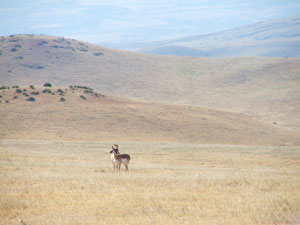
photo by Terry Burton
Museo de las Tres Colonias
- Location
- 425 10th St. Fort Collins
- Hours
- 12:30 to 3:00 pm on the third Saturday each month
- Cost
- Free
Designated as a Fort Collins Local Landmark in 2001, the former family home of John and Inez Romero now serves as a regional interpretive center that recognizes the contributions of the Hispanic community in achieving Northern Colorado ’s spectacular growth and development.
For more information, visit the Museo's website at http://museodellastrescolonias.org/Museo/Museo.html.
The Romero House
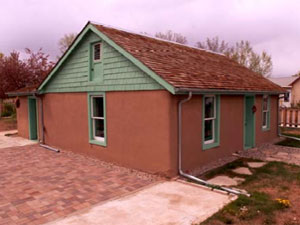
Photo courtesy of Poudre Landmarks Foundation
Colorado State University
- University Welcome Center
- Located in Ammon Hall (see map). Academic year hours: 7:45 - 4:45. Summer hours: 7:30 - 4:30
- Maps
- For a campus map, click here
- For a map of parking areas, click here
The Welcome Center at Ammon Hall is the university's official front door for visitors. The center offers general information about campus and the Fort Collins community, along with admissions information for prospective students and their families, including daily information sessions and campus tours.
For more information on planning your visit, see the Colorado State University website at www.colostate.edu/
Ammons Hall on the CSU Oval

photo courtesy of Colorado State University
Cathy Fromme Prairie Natural Area
- Managing Agency
- City of Fort Collins Natural Areas Program
- Open
- 5:00 am - 11:00 pm
- Trails
- The paved Fossil Creek Trail is 2.5 miles one way.
- Parking
- Located at Shields Street (s. of Harmony) and Fromme Prairie Way (from Harmony take Seneca s. to Fromme Prairie Way).
Cathy Fromme Prairie is a rare example of Fort Collins’ pre-settlement shortgrass prairie landscape. Prairie dog colonies here support bald eagles and hawks. Horned lizards, ground-nesting songbirds, butterflies, rabbits, coyotes and rattlesnakes also can be seen. The raptor observatory, built into the hillside near the Shields Street entrance, is an excellent place from which to watch hawks and eagles, especially in winter. Educational activities are offered from May - October.
Fossil Creek Trail
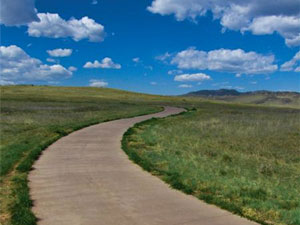
photo by Ryan Burke


